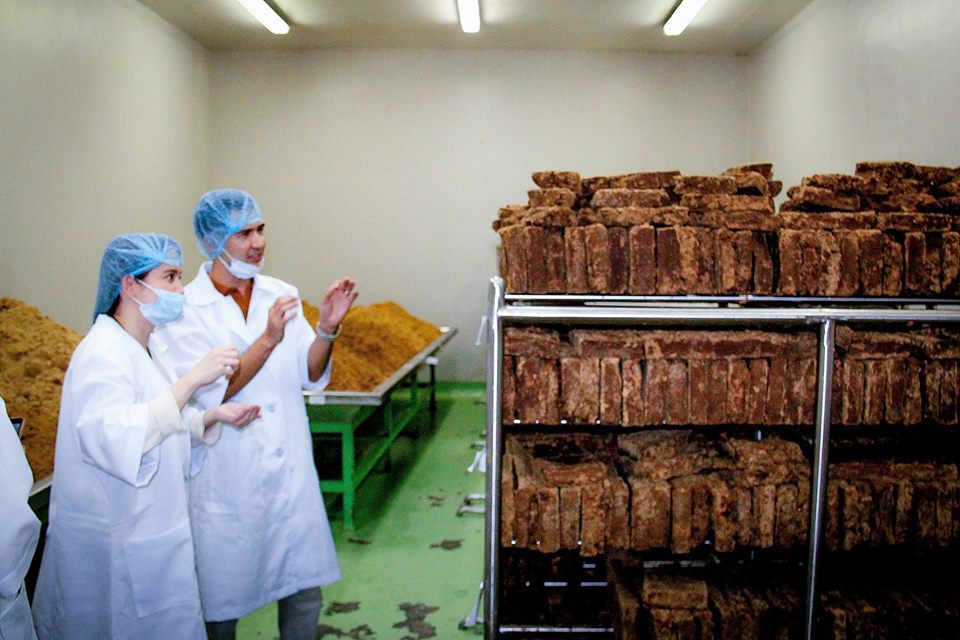News
PH aims for global competitiveness in coco-sugar

As part of its 2018 National Coconut Week celebration, the PCA led a stakeholders’ consultative forum on Wednesday, to tackle challenges and opportunities in coco-sugar and help the country become globally competitive in this product. (PNA file photo)
MANILA — The Philippine Coconut Authority (PCA) is aiming to make the country to capture more of the rising global market for coco-sugar, a natural product from coconut palms that abound nationwide.
As part of its 2018 National Coconut Week celebration, the PCA led a stakeholders’ consultative forum on Wednesday, to tackle challenges and opportunities in coco-sugar and help the country become globally competitive in this product.
Discussions at the forum will serve as inputs for the roadmap that the PCA and the stakeholders will develop for further improving both the quantity and quality of coco-sugar produced nationwide, as well as the marketing of the product.
“That’s our plan, as coco-sugar has a lot of potential and opportunities,” PCA’s Research and Development Deputy Administrator Erlene Manohar said at the sidelines of the forum. Coco-sugar is derived from tapping unopened inflorescence of coconut palms.
Coco-sugar production uses farm-level technology, involving the natural process of heat evaporation to convert the coconut’s liquid sap into sugar granules, the PCA explained.
The agency cited a 2007 Food and Nutrition Research Institute study, which showed that coconut sap sugar’s glycemic index (GI) is 35.
Such finding makes coco-sugar a low-GI food, the PCA said.
“GI is a ranking system for carbohydrates, based on immediate effect on blood glucose level,” the PCA explained further. “Low-GI food will cause a small rise in blood glucose level.
High-GI food will trigger a dramatic spike. The higher the GI value, the greater the blood sugar response.”
Manohar said the PCA is keen on promoting coco-sugar, having identified this as an emerging product, particularly amid rising consumer interest in health and wellness. Such interest and rise in the number of people with dental caries, obesity, and diabetes are helping fuel global demand and business opportunity for low-calorie, reduced-sugar, and sugar-free products, she noted.
“Growing demand for the product to replace traditional sweeteners is likely to drive industry growth because of its low GI, compared with cane sugar and honey,” PCA Administrator Romulo de la Rosa also said in his message at the forum.
De la Rosa likewise expects that the increasing demand for herbal skin and hair care products will have a positive impact on coco-sugar industry’s growth.
Coco-sugar is not yet formally tracked in global trade flow databases, Manohar noted.
Estimated global market for non-sugar sweeteners alone was already about USD9.2 billion in 2010, the PCA said.
It added the market for coco-sugar is expected to further grow in the next eight years.
“Increasing demand for coco-sugar will cause this product’s price to rise,” Manohar said.
Australia, New Zealand, US, South Africa, North and Latin America, France, Canada, Norway, Europe, Japan, and the Middle East are the major markets for coco-sugar, she said.
Indonesia, Thailand, and the Philippines are the world’s major producers and exporters of granulated coco-sugar at present, said Manohar.
She said Indonesia and Thailand are giving the country competition in terms of quantity and quality of coco-sugar produced, respectively.
Citing data on PCA-registered processors, she said the Philippines produces about 4,000 metric tons of coco-sugar annually. Indonesia produces more, as coconut trees there are lower, so collecting sap is easier, she said.
Low yield of sap from existing coconut varieties in the country, danger and difficulty in collecting sap from tall coconut trees, and limited number of people skilled in collecting sap are among the problems hounding the local coco-sugar production, she noted.
“We must put things in order,” she said, highlighting the need to develop the country’s coco-sugar road map.
Manohar said the PCA had already developed a hybrid coconut variety that averages about five meters high only, making it easier to collect sap. That hybrid also starts producing inflorescence in a shorter period after being planted, unlike coconut trees generally found in the country, and planting of the hybrids is already ongoing, she said.
Philippine-made coco-sugar is of high quality, since anti-fermenting agents are not used in producing this, Manohar clarified.
Instead of lowering price of Philippine coco-sugar to match competitors’ prices, she said the country must come up with a market positioning strategy for this product.
Market positioning is the process of establishing a product’s image or identity, so consumers perceive it in a certain way.
“What we failed looking into is how to classify coco-sugar,” Manohar said.
She noted classifying such product as sugar might not work “since there are already a lot of sugar in the market like muscovado and cane.”
“Our goal is to instead align coco-sugar with medical aspects like being good for diabetics and having nutritional value,” she said.
Aligning coco-sugar with sweeteners is also sound positioning, she added, since what is in the market are synthetics.
Manohar said there is still no timetable for development and completion of coco-sugar’s road map.
“Within this year, however, I’ll try my best to set everything in order, so we can move forward by next year,” she said.
Manohar is not discounting a possible holding of the second coco sap congress in 2019, so the PCA and stakeholders concerned can further tackle challenges in coco-sugar and seize opportunities this product presents.
The first coco sap congress was in 2012, she added.





















